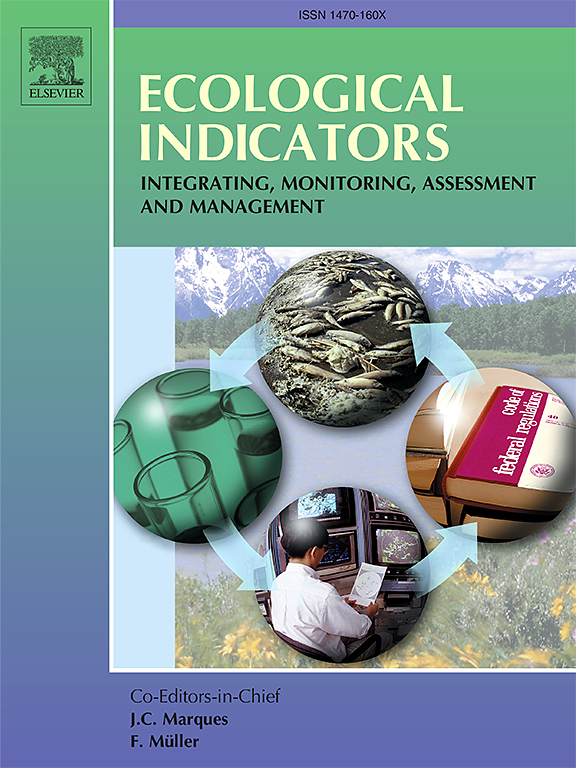中国山洪灾害时空特征及触发因素探讨
IF 7
2区 环境科学与生态学
Q1 ENVIRONMENTAL SCIENCES
引用次数: 0
摘要
山洪是一种主要的自然灾害,由于极端天气事件日益频繁而日益加剧,造成大量人员伤亡和经济损失。本研究首先整理了2017 - 2021年的山洪灾害数据,分析了其时空分布趋势。然后,引入XGBoost定量识别山洪暴发的关键影响因素,并使用Shapley加性解释(Shapley Additive explanatory)进行全球解释。在此基础上,通过三维趋势分析研究了山洪驱动因素的空间异质性,阐明了影响山洪驱动因素空间特征的关键因素。结果表明:(1)中国山洪灾害呈上升趋势,2019年发生次数最少;暴洪主要集中在汛期,以西南地区最为普遍,与暴雨的空间分布具有高度的一致性。(2)可解释机器学习具有较高的精度,气象和地形因子是山洪发生的主要驱动因素。(3)山洪发生的区域变化受关键环境因子的显著调节,特别是年降水量、海拔和坡度。其中,在低降水、高海拔地区,山洪暴发受到明显抑制,而在中等海拔和陡坡地区,山洪暴发的发生明显增加。这些研究结果为山洪灾害的预防和管理提供了重要的理论和技术参考。本文章由计算机程序翻译,如有差异,请以英文原文为准。
Exploration of the spatiotemporal characteristics and triggering factors of flash flood in China
Flash floods are a major natural hazard, increasingly intensified by the growing frequency of extreme weather events, causing substantial casualties and economic losses. This study first compiled flash flood disaster data from 2017 to 2021 and analyzed its spatiotemporal distribution trends. Then, XGBoost was introduced to quantitatively identify key influencing factors of flash floods, with a global interpretation conducted using SHAP (Shapley Additive Explanations). On this basis, a three-dimensional trend analysis was conducted to examine the spatial heterogeneity of flash flood drivers, thereby elucidating the key factors that govern their spatial characteristics. The results indicate that: (1) Flash flood disasters in China have exhibited an upward trend, with the lowest occurrence in 2019. Flash floods are primarily concentrated in the flood season and are most prevalent in the southwestern region, exhibiting a high consistency with the spatial distribution of heavy rainfall. (2) The explainable machine learning achieves high accuracy, with meteorological and topographical factors serving as the primary drivers of flash flood occurrence.(3) Regional variations in flash flood occurrences are significantly modulated by key environmental factors, particularly annual precipitation, elevation, and slope. Specifically, flash floods are notably suppressed in low-precipitation, high-elevation regions, while moderate elevations and steep slopes significantly enhance their occurrence. These findings offer essential theoretical and technical references for flash flood disaster prevention and management.
求助全文
通过发布文献求助,成功后即可免费获取论文全文。
去求助
来源期刊

Ecological Indicators
环境科学-环境科学
CiteScore
11.80
自引率
8.70%
发文量
1163
审稿时长
78 days
期刊介绍:
The ultimate aim of Ecological Indicators is to integrate the monitoring and assessment of ecological and environmental indicators with management practices. The journal provides a forum for the discussion of the applied scientific development and review of traditional indicator approaches as well as for theoretical, modelling and quantitative applications such as index development. Research into the following areas will be published.
• All aspects of ecological and environmental indicators and indices.
• New indicators, and new approaches and methods for indicator development, testing and use.
• Development and modelling of indices, e.g. application of indicator suites across multiple scales and resources.
• Analysis and research of resource, system- and scale-specific indicators.
• Methods for integration of social and other valuation metrics for the production of scientifically rigorous and politically-relevant assessments using indicator-based monitoring and assessment programs.
• How research indicators can be transformed into direct application for management purposes.
• Broader assessment objectives and methods, e.g. biodiversity, biological integrity, and sustainability, through the use of indicators.
• Resource-specific indicators such as landscape, agroecosystems, forests, wetlands, etc.
 求助内容:
求助内容: 应助结果提醒方式:
应助结果提醒方式:


